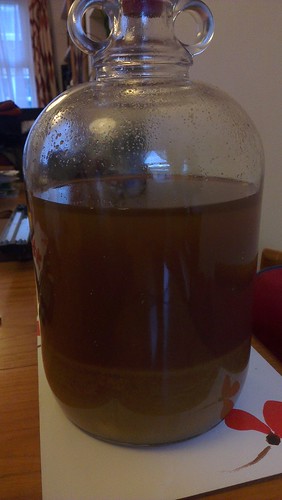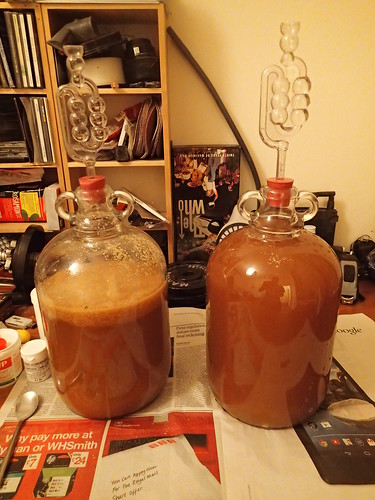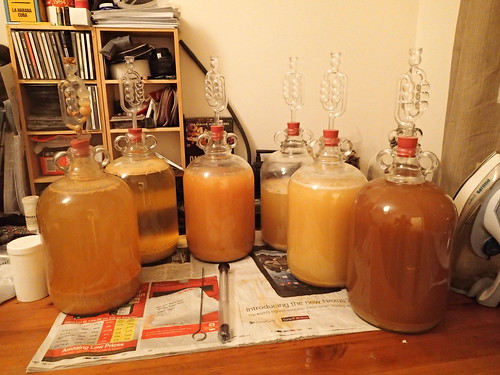...
What next
Bottling?
Use a slim plastic tube to siphon into smaller bottles (how do you stop sediment going)?
If so I know plastic lemonade are good, but thinking of some Grolsh types, as they look fancy and it's the first bottling
Where do you suggest I can get them, Ikea sell some, are they strong enough?
Once I've put in sterlised bottles, should I fill to the top? How long would they last?
Is there anything I can add at this stage to make interesting taste i.e. ginger, raspberries, or is it too late
Finally what do you do with the sediments anything fun?
Thanks
You can use plastic tube from B&Q - thin diameter = slow flow, thicker diameter = fast flow - you might want larger tubing for racking off the sediment from one DJ to another clean one, and thinner for bottling (else you might end up spilling lots if it's coming out too fast).
First wait till fermentation has finished - maybe two more weeks for the first ones, then rack to another DJ leaving the sediment behind, and top up with more juice or boiled water. Then leave to clear for at least two weeks, then rack again to another DJ to leave behind the last layer of sediment. Then bottle.
You can get a device for racking (transfer liquid from one DJ to another, whilst leaving sediment behind) - this is basically a rigid plastic tube attached to your tubing, with a cap on the bottom, it can be lowered into the DJ, and if you clip it somehow to the neck of the DJ, the bottom of the tube is above the layer of lees, so you donât transfer any sediment.
You can also get a âlittle bottlerâ which is a tubing system which only lets liquid through when itâs in the bottle (not sure how it works, but people on here tend to like it) â personally I use a tube that I can stick my finger of the end of, and my bottles are lined up ready with lids off, and I just go from one to the next, stopping the flow with my finger between each one.
Level of liquid in bottles needs to be near the top but leave some air space â too much and you have a small risk of spoilage due to oxygen, to little, and CO2 pressure wonât build up enough if youâre making fizzy.
If youâre going fizzy then any bottle thatâs previously taken pressure (2 litre coke bottles, champagne bottles, glass bottles with crown caps) â if youâre going with dry, still cider, then youâll kill of the yeast, and have no need for pressure able bottles, so 1 litre squash bottles will be fine â either kill the yeast with chemicals, or rack off the yeast enough times to leave none behind, and no sugars left to ferment should be ok too.
Bottles will improve with age for up to a year or two, and maybe longer, and will slowly deteriorate, but still drinkable many years longer (not usually a problem on this forum, the speed some drink).
Flavours should be added before bottling ideally, allowed any extra fermentation to happen, and then taken off the sediment. If you add at the start, all the flavour may go before fermentation finishes, too near the end, and it wonât all ferment out, or youâll have too much. There are many threads about this.
Sediment can be kept, and used as a yeast starter for your next batch, it's also very nutritious, vull of vitamin B, and can be drank, eaten if you really want to. Otherwise I just stick mine on the compost heap if it's thick enough, or swill down the drain..
Good luck â hope they turn out ok.
p.s. have you thought about bulk ageing, and Malolactic Fermentation?











































![BREWING THERMOMETER STICKERS ACCURATELY MONITOR FERMENTING BEER & WINE LIQUID TEMPERATURES 5PCS HOME BREW SPIRITS WINE LCD ADHESIVE [US]](https://m.media-amazon.com/images/I/311DDjo2X3L._SL500_.jpg)

